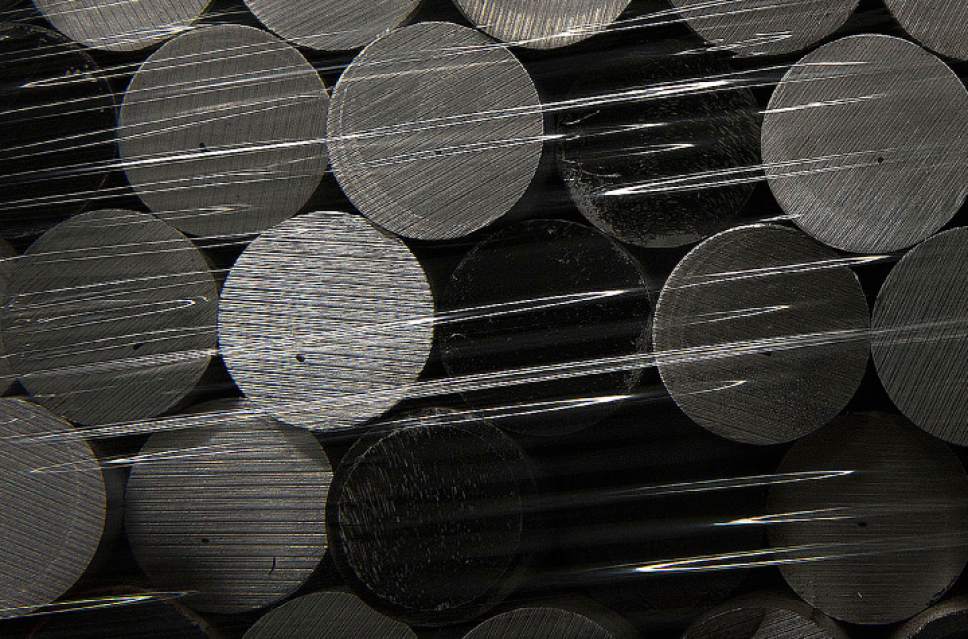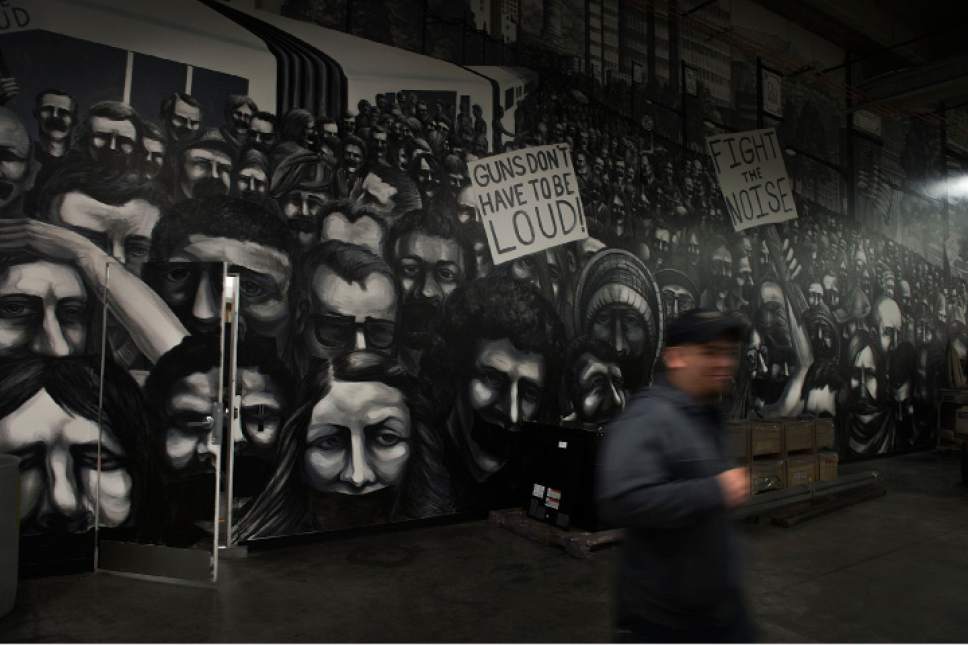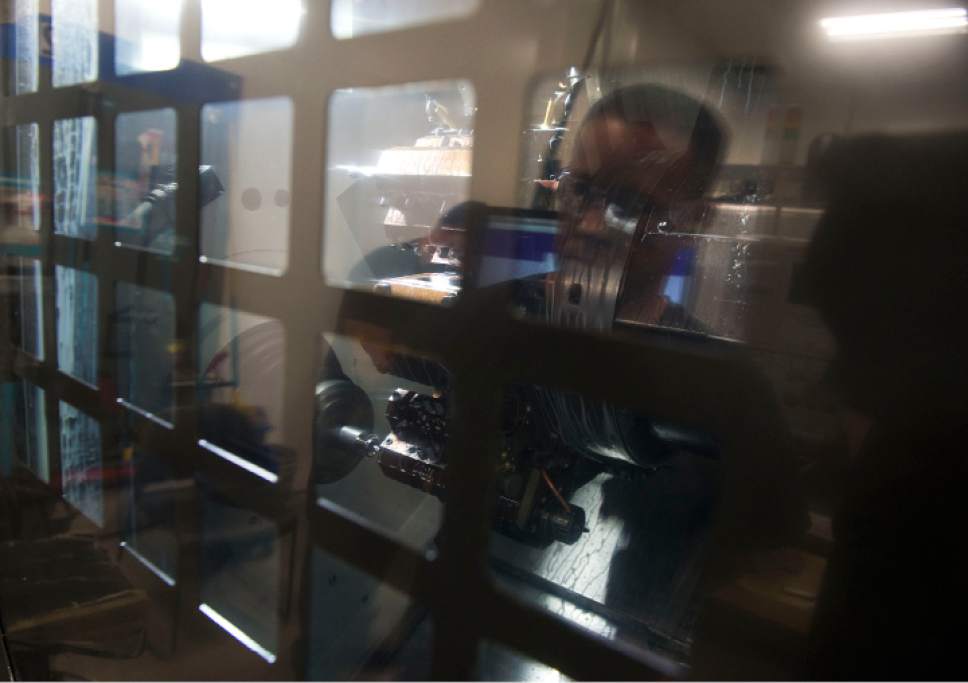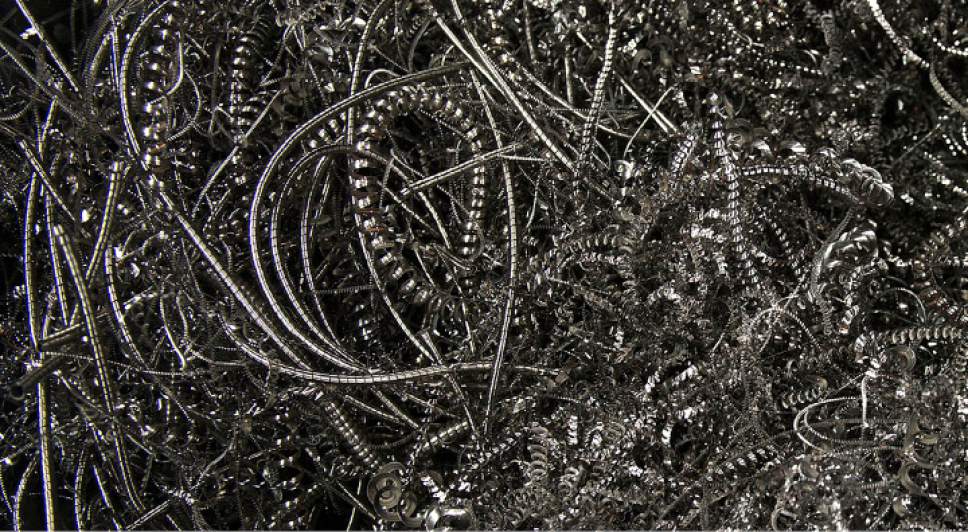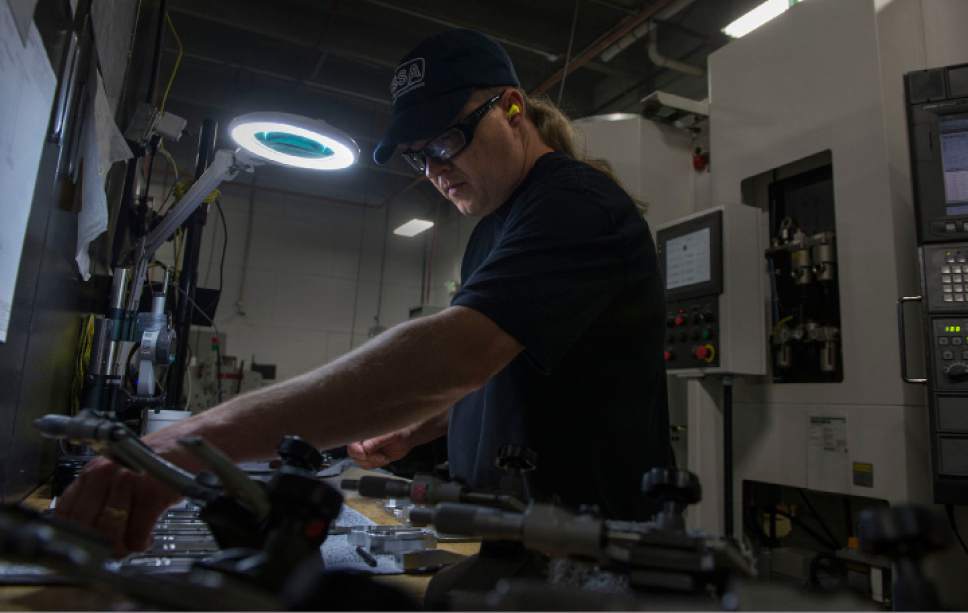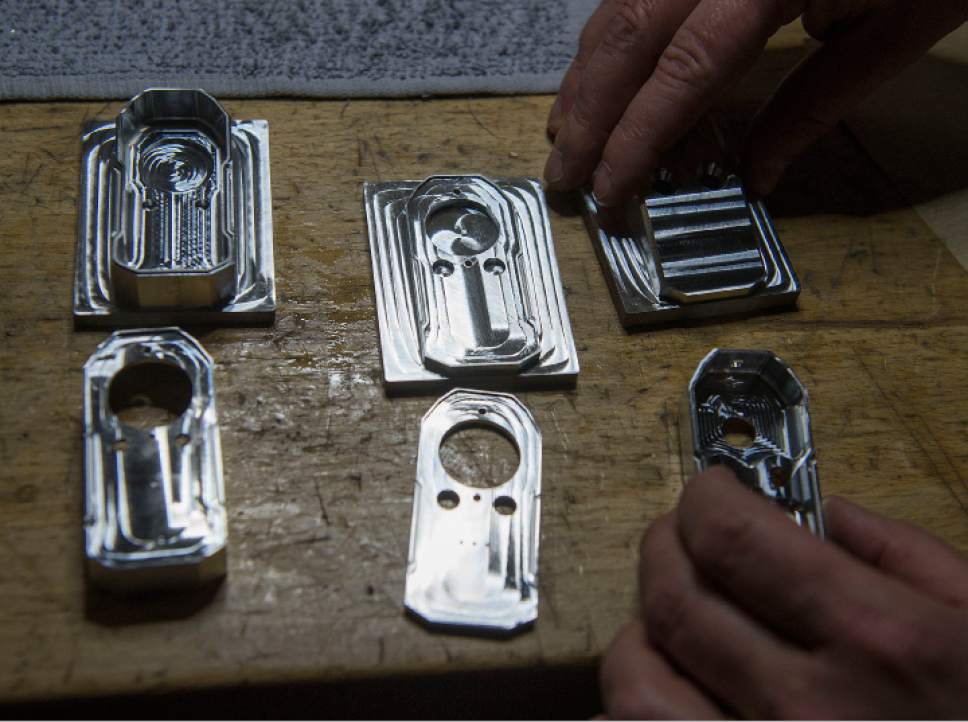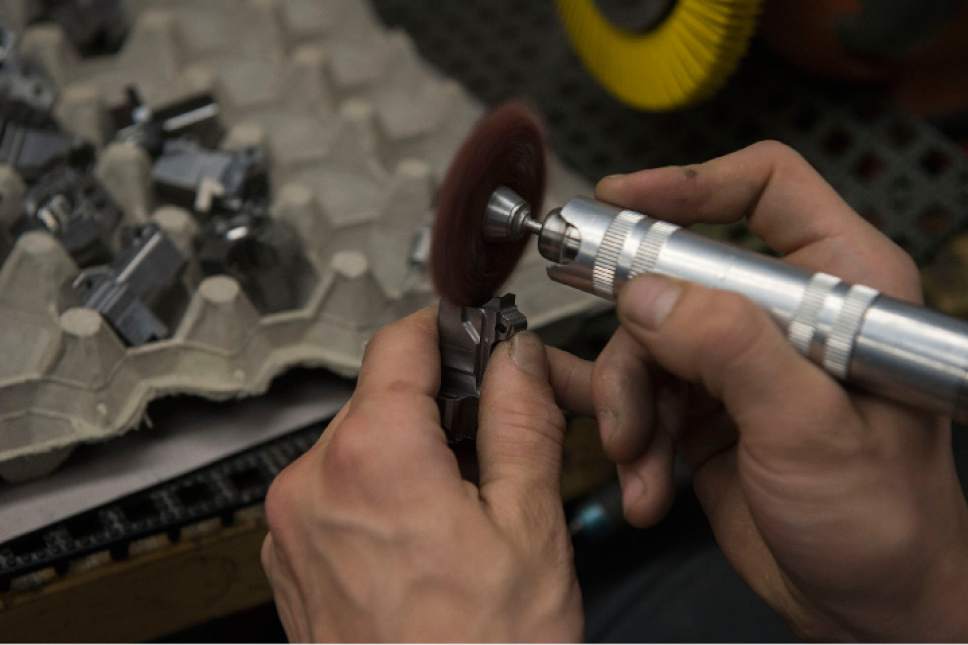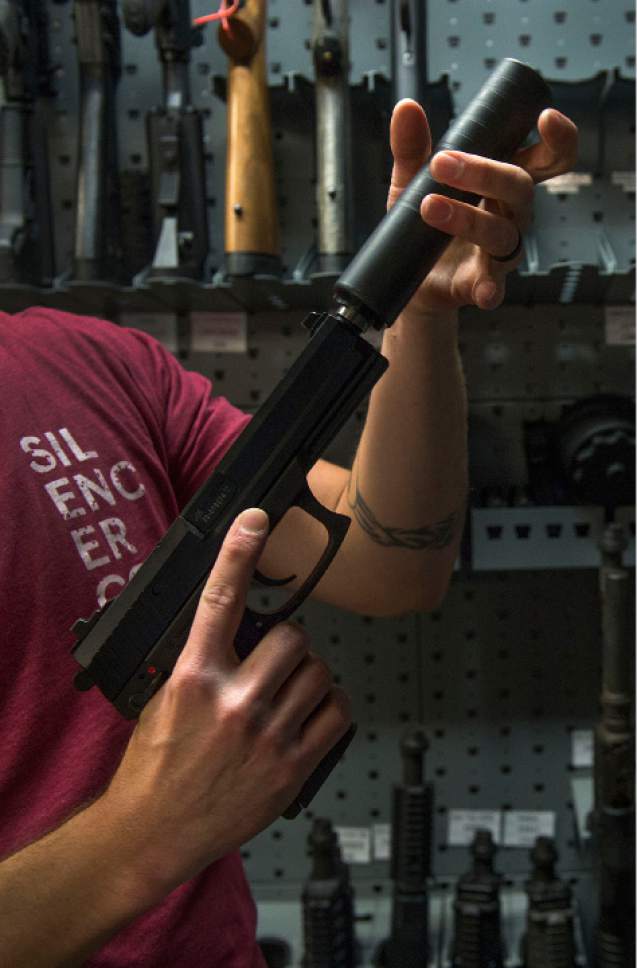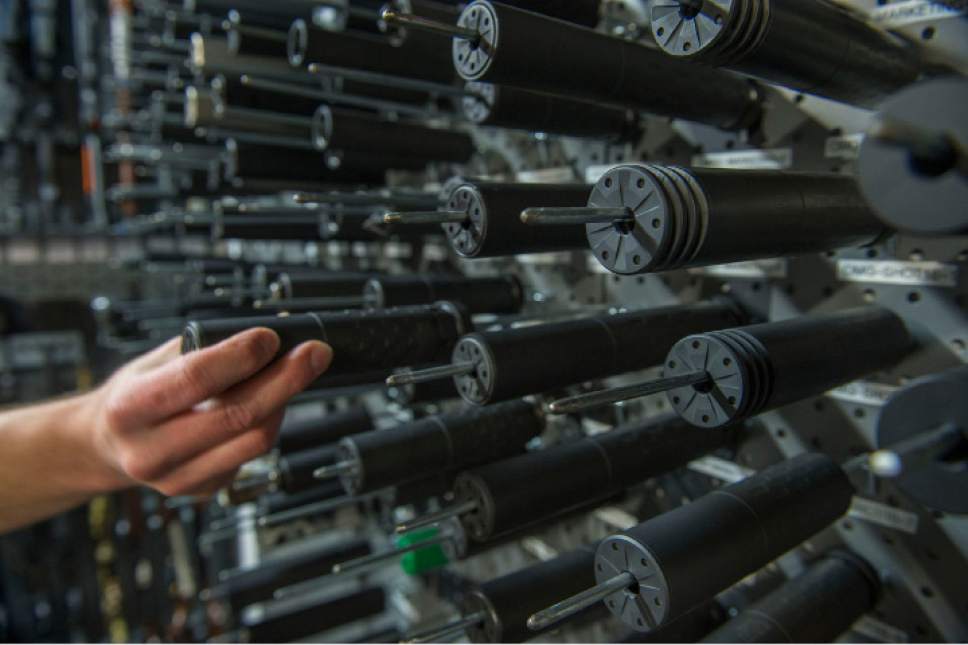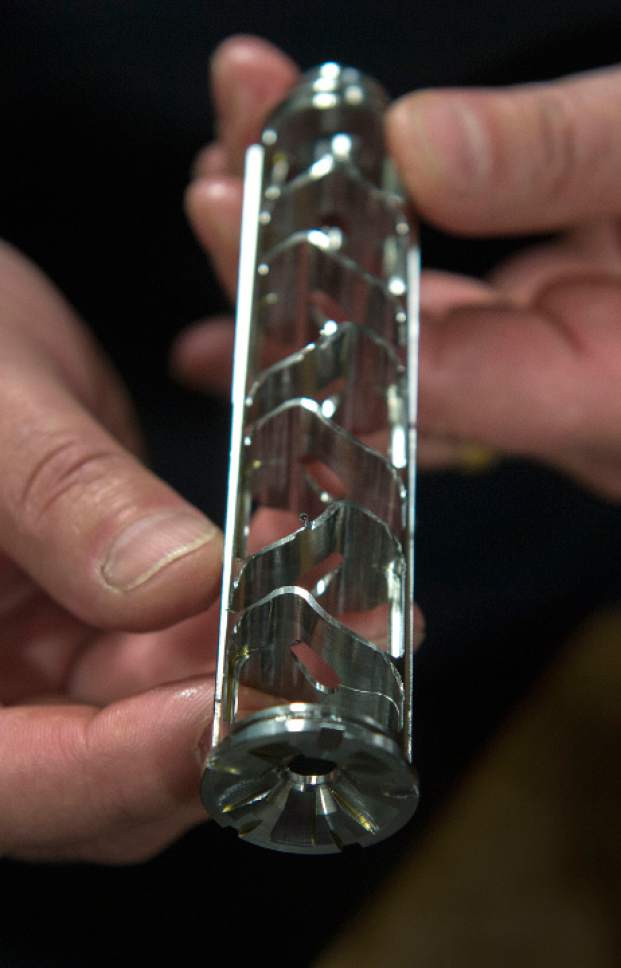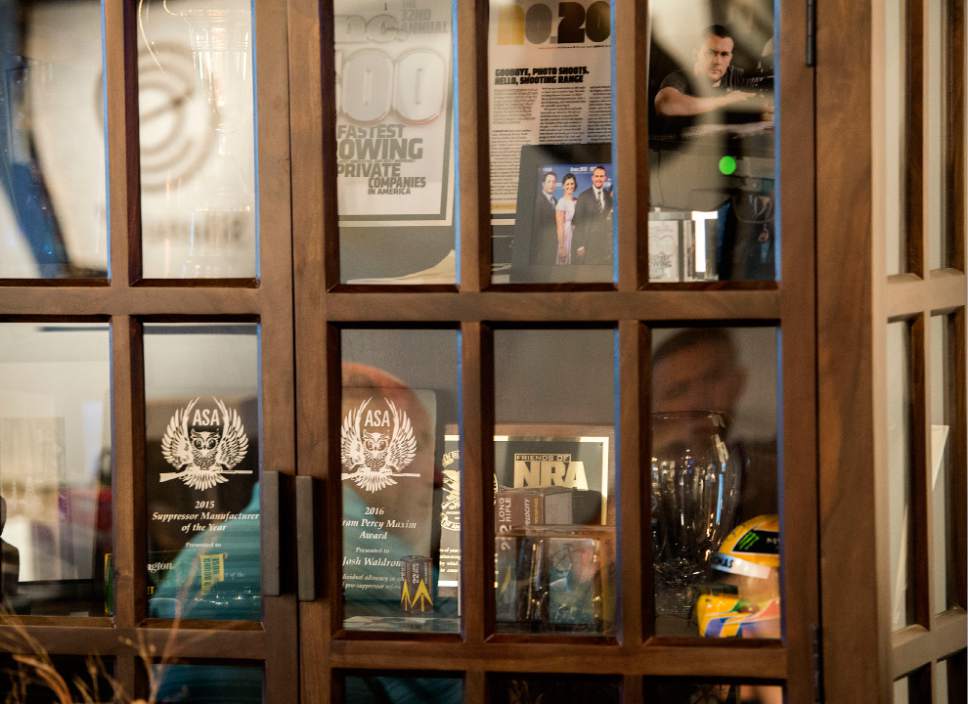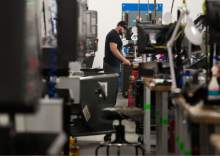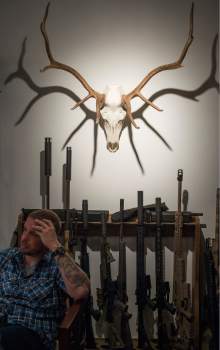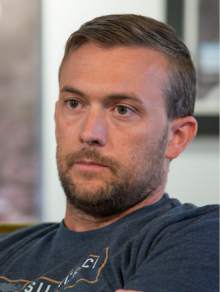This is an archived article that was published on sltrib.com in 2017, and information in the article may be outdated. It is provided only for personal research purposes and may not be reprinted.
West Valley City • After the Republican triumph in last fall's election, Silencerco seemed poised for a lucrative surge in demand for its silencers for firearms.
Donald Trump was in the White House, supported in his presidential campaign with $100,000 from company co-founder Joshua Waldron and his wife, Aubrey.
Trump's son, Donald Jr., had made a September visit to Silencerco's manufacturing plant in West Valley City, where he called federal regulation of silencers "way overblown" and said he supported lifting restrictions, in place since 1934, on buying them.
Silencerco had given another $200,000 to two groups promoting that goal — the National Sportsman Shooting Foundation and an Illinois firearms auction house — and legislation was introduced in both Republican-controlled houses in January.
But as the Trump administration has foundered with Russian investigations and other controversies, Waldron's initial optimism has diminished. Business has, too, as potential customers apparently wait to see if they can avoid the current $200 tax and eight-month delay for paperwork.
With that decline, the company had layoffs in early February, which trade publications including "Modern Rifleman" said involved a couple of hundred workers. Spokesman Matt Pinnell, without providing a number, said Silencerco had to "right-size for current industry conditions" and now employs 290.
Changing the law has "become a very tricky problem right now" with Trump and Congress focused on other issues, Waldron said in a recent interview at Silencerco's 72,000-square-foot manufacturing plant, just south of USANA Amphitheatre. Still, he's not about to give up.
"I'm optimistic because I want to believe in positive change," he said. "But I'm realistic as well and know that it will take time and effort and will be hard to do."
Ending federal regulation of silencers is the sole focus of the brief Hearing Protection Act of 2017, which backers hail as vital to limiting hearing loss for people who shoot guns frequently while foes see it as a misleadingly named attempt to boost sales without regard for public safety.
The public safety debate
The act was introduced in the Senate by Mike Crapo, R-Idaho, and in the House by Reps. Jeff Duncan, R-S.C., and John Carter, R-Texas — backed and co-sponsored by Utah's Republican congressional delegation.
Sen. Mike Lee likes the idea of ending silencer regulation, said aide Conn Carroll, because "people should have access to this technology. There's really no reason not to."
"This is a really common sense fix," added Rep. Chris Stewart in an email. "Contrary to the Hollywood portrayal, silencers are used for hearing protection, not to commit crimes. Even the leadership of the [federal Bureau of Alcohol, Tobacco, Firearms and Explosives] has acknowledged that fact. We ought to make it easier for folks to use them."
Stewart included a link to a "white paper" on options for reducing firearm regulations, issued Jan. 20 by ATF Associate Deputy Director Ronald Turk. Turk said his agency spends $1 million annually on overtime and dedicates 33 workers just to processing National Firearms Act applications, most involving silencers.
"ATF's experience with the criminal use of silencers also supports reassessing their inclusion in the [National Firearms Act]," he wrote. "Silencers are very rarely used in criminal shootings. … It is reasonable to conclude that they should not be viewed as a threat to public safety."
Opponents don't buy that argument.
They include gun-control advocacy organizations such as the Violence Policy Center and the Brady Campaign to Prevent Gun Violence, begun by former White House press secretary James Brady after he was permanently disabled in a 1981 assassination attempt on President Ronald Reagan.
In a report last year, "Silencers: A Threat to Public Safety," the Violence Policy Center accused the firearms industry of aggressively marketing suppressors as a new potential profit center, noting that the number of legally registered silencers in the United States rose from 285,087 in 2010 to 902,805 in 2016.
The increase, along with higher firearm sales, are viewed as reactions to fears that former President Barack Obama might secure tougher gun-control measures after several high-profile mass shootings, including the 2012 killings of 20 children and six adults at Sandy Hook Elementary School in Connecticut.
"Silencers are military-bred accessories that make it easier for criminal to take innocent lives," said Kristen Rand, citing a half-dozen incidents in which silencers have been used in crimes.
In February 2013, for instance, Christopher Dorner killed four law-enforcement officers and wounded several others in Southern California with a silencer on a 9mm semiautomatic Glock pistol. Two years later, silencer-equipped handguns were used to kill an investor in a Napa Valley winery and to gun down a restaurant owner in Los Angeles. In Milwaukee last year, authorities arrested a man who had bought automatic weapons and a silencer, allegedly intending to shoot up a Masonic center.
"Elected officials should stand up to the gun industry's craven attempt to make silencers more easily available," Rand added. "The campaign to deregulate silencers is merely the latest attempt by the gun lobby and the gun industry … to market yet another military-bred product with little concern for its effect on public safety."
'All about hearing and safety'
Waldron scoffs at such attacks. "It's absolute bullcrap to defame the name of what a suppressor is," he said. "That's why it's important to educate that they're all about hearing and safety."
In a video created by Silencerco, Trump Jr. concurred, sounding like his father in denouncing critics. "The people that are most against it are the people who've never really done it, people who wouldn't know a trigger from a muzzle."
He added, "I believe in American manufacturing. I love your product. … If you have [high] noise levels in any other industry as you would in shooting sports, OSHA [the federal Occupational Safety and Health Administration] would be all over the place, people would be going crazy. It's about safety. [The 1934 law] is just another rule the government wants to put in place for no reason."
Waldron said he has made a half-dozen trips to Washington, D.C., this year to educate lawmakers about silencers, which were included in the 1934 law that primarily cracked down on machine guns, shotguns and other firearms in use during Prohibition — "particularly the gangland crimes of that era such as the St. Valentine's Day massacre," according to the ATF website.
"We want to break myths, preconceptions" that silencers are for criminals, Waldron said. "It's easy to educate around the main purpose for the suppressor — hearing protection, first and foremost. But it also allows for a safer environment. Opponents say, 'Why don't you just wear earplugs?' But you can't be in the hunting field and expect to be safe if you're wearing hearing protection. You couldn't hear a predator nearby. You couldn't hear your prey nearby."
Robert Dobie, a professor of otolaryngology at the University of California, Davis, said he knows of no studies that prove suppressors can eliminate hearing damage. But anything that quiets a noise by 25 decibels to 30 decibels, the customary reduction achieved with use of a silencer, will lessen the impact. A 12-gauge shotgun blast registers 165 decibels.
"We know for sure that anything bigger than a .22 [caliber gun] is potentially hazardous in terms of hearing loss," Dobie said. "And we know that people who shoot more acquire more hearing loss over time. It would actually be shocking if [suppressors] didn't reduce the amount of hearing loss."
Niki Barwick, an audiology doctor at the University of Utah's Farmington Health Clinic, agreed that silencers would help hunters, trap shooters and other recreational shooters to avoid hearing damage.
"Gunshots are loud enough to start causing damage instantly," she said, noting impacts increase with repeated exposure. "We always recommend that anyone who does shooting wear earplugs, even earmuffs in some cases. A silencer would be perfect in reducing the noise source."
Waldron and company President Jason Schauble are unabashed, however, in accepting Violence Policy Center's point that they are interested in growing their business.
"There are 300 million firearms out there and [about] 1 million silencers," Schauble said. "That shows you the relative scale of the business opportunity."
Registered silencers in the United States
2012 — 360,534
2013 — 494,452
2014 — 571,750
2015 — 792,282
2016 — 902,805
Source: U.S. Bureau of Alcohol, Tobacco, Firearms and Explosives —
More online
To hear several types of guns fired with and without silencers, visit sltrib.com.


